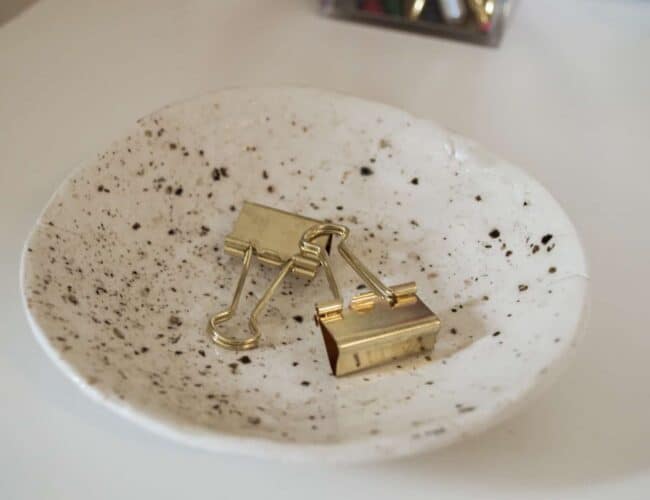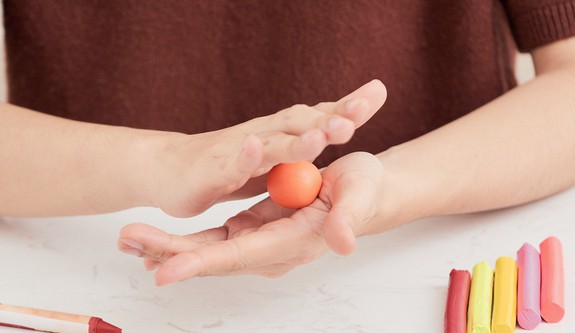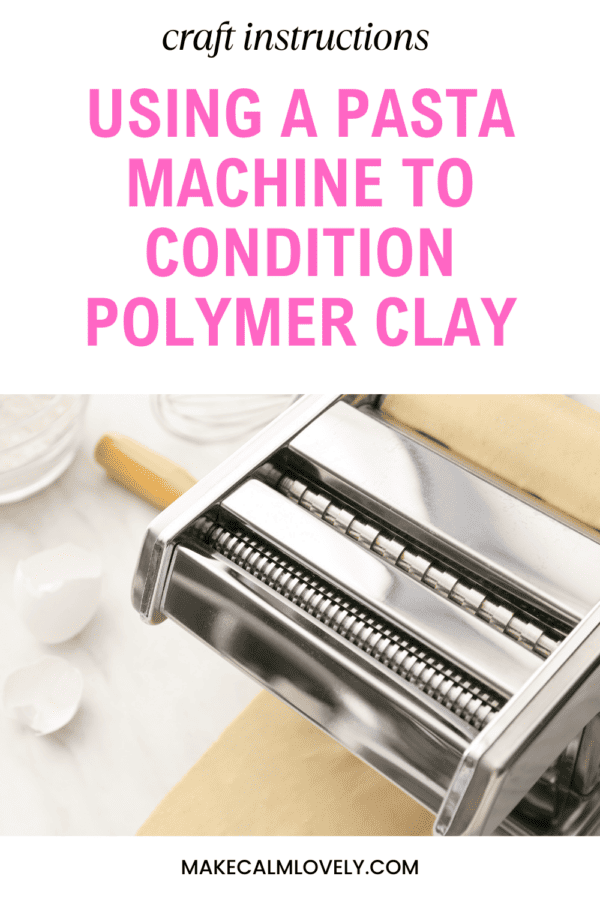Using a Pasta Machine to Condition Polymer Clay
A pasta machine can speed up and make the conditioning of polymer clay much easier and consistent. Learn about why using a pasta machine is a great way to condition your clay
A great way to condition your polymer clay is to use tools to make the process faster and easier.
The best tool is definitely a pasta machine. Don’t assume that a pasta machine is really only for preparing your pasta! It makes a great tool for conditioning your polymer clay!

What is Conditioning of Polymer Clay?
When you condition polymer clay you are merely just warming it up, in order to make it much easier to work with.
Properly conditioned polymer clay will be much softer to work with, and much more malleable to mold into shapes.
Unconditioned polymer clay can become brittle and hard. Any creations you make with unconditioned clay could easily break apart and not bond together correctly.
Ways to Condition Polymer Clay
You can either condition polymer clay by hand or by using tools to do so. Tools can make the conditioning process go much faster.
When you condition clay by hand you will need to use smaller lumps of clay at a time. The warmth of your hands will make the clay soften up so that it is easier to use.
Begin by warming the clay in your hands, rolling it into a ball, and then flattening it. Fold and roll the clay repeatedly, using a combination of your hands, a roller, or a pasta machine.
This process helps distribute heat and pressure evenly, softening the clay and eliminating air pockets. Continue folding, rolling, and kneading until the clay becomes pliable, smooth, and consistent.
If you will be using tools to condition your clay, to make the process faster and easier, a pasta machine is an excellent choice.
Using a Pasta Machine to Condition Polymer Clay
Just like rolling out a sheet of pasta, a pasta machine can easily roll out polymer clay.
The best type of pasta machine to use is a hand crank pasta machine. Metal rollers are also best for rolling out polymer clay. Pasta machines usually come with different thicknesses, so you can find the thickness that works for you.
To roll through a pasta machine, fold the clay loosely and insert into the machine. Turn the crank to push out a sheet of clay.
Repeat this process several times to achieve a really smooth piece of conditioned clay.
A pasta machine will definitely get your polymer clay the right thickness that is consistent for your projects.
For your pasta machine to work well for you it must be maintained and cleaned regularly. Pieces of hard clay that are trapped inside the machine can greatly affect your rolled out clay pieces.
How to Tell if Polymer Clay is Properly Conditioned
Properly conditioning polymer clay is essential for achieving the best results in your projects. Here’s how you can tell if polymer clay is properly conditioned:
Texture and Consistency: Well-conditioned polymer clay should have a consistent texture throughout the entire piece, without any hard or crumbly areas.
When you break off a small piece and roll it between your fingers, it should feel smooth and slightly tacky, like a soft chewing gum.
Flexibility: Properly conditioned clay should be flexible and easy to bend. You should be able to manipulate the clay without it cracking or breaking, and it should hold its shape when molded or bent.
Stretching: Gently stretch a small piece of clay. If it stretches without tearing or breaking, and it returns to its original shape without distortion, then it’s likely well-conditioned. If it tears easily or doesn’t bounce back, it may need further conditioning.
Surface Appearance: The surface of well-conditioned clay should be free of visible cracks, air bubbles, or uneven spots. If you see any of these issues, it’s an indication that further conditioning is needed.
Ease of Manipulation: When you’re working with well-conditioned clay, it should be easy to roll, shape, and blend. If the clay feels stiff, difficult to mold, or resists your attempts to shape it, it may require more conditioning.
Sticky Test: A slightly sticky texture is a sign that the clay is well-conditioned. Gently press your finger onto the clay’s surface, and it should feel slightly tacky without leaving a residue on your finger. This tackiness helps clay adhere to other pieces and aids in blending.
Time and Effort: If you’ve spent a reasonable amount of time kneading and working the clay, and it’s becoming easier to manipulate, it’s likely becoming well-conditioned. Conditioning can take some time, especially for firmer brands of clay.
Remember that different brands and types of polymer clay may require varying degrees of conditioning. Softer clays might need less conditioning, while firmer clays may need more effort.
Common Problems with Conditioning Polymer Clay
Conditioning polymer clay can sometimes be a bit challenging, especially for beginners. Here are some common problems you might encounter when conditioning polymer clay and how to address them:
Hard or Crumbly Clay: If your clay is hard, stiff, or crumbly, it hasn’t been conditioned enough. To address this, continue kneading, folding, and rolling the clay until it becomes softer and more pliable.
You can also try warming the clay by placing it in a plastic bag and letting it sit in a warm place or using a hair dryer on low heat to soften it before kneading.
Air Bubbles: Air bubbles can get trapped in the clay during the conditioning process. To prevent this, make sure to press and flatten the clay thoroughly before folding and rolling it.
If you do notice air bubbles, gently poke them with a needle or pin to release the trapped air.
Uneven Texture: If you find that your clay has patches of different textures, it might not have been conditioned evenly. Keep kneading and folding the clay until the texture becomes consistent throughout.
Sticky Clay: While a slightly tacky texture is desirable, excessively sticky clay can be difficult to work with. If your clay is too sticky, let it sit out for a little while to allow some of the excess plasticizer to evaporate.
You can also dust your hands, tools, and work surface with cornstarch or a bit of baby powder to reduce stickiness.
Color Transfer: If you’re working with multiple colors of clay and notice color transferring onto your hands or tools, the clay may not be fully conditioned. Knead each color separately until it becomes smooth and consistent before blending them together.
Warping in the Pasta Machine: If you’re using a pasta machine to condition your clay and notice that it warps or gets distorted while rolling it through the machine, you might be applying uneven pressure.
Make sure the clay is centered and evenly distributed on the rollers before rolling it through the machine.
Difficulty Blending Colors: If you’re trying to blend different colors of clay and they’re not blending smoothly, it’s a sign that the clay may not be fully conditioned. Keep kneading and blending until the colors seamlessly mix together.
Fingerprints and Marks: Fingerprints and marks on the clay surface can be a result of uneven pressure during conditioning. Try to apply consistent pressure while folding and rolling the clay to avoid leaving marks.
Over-Conditioning: It’s possible to over-condition polymer clay, especially softer brands. Over-conditioned clay may become too soft and difficult to work with. If you notice this happening, let the clay rest for a bit to regain some firmness.
Physical Strain: Conditioning polymer clay can require some physical effort, especially for firmer clay brands. Take breaks as needed to prevent straining your hands and wrists.
Remember, practice makes perfect when it comes to conditioning polymer clay. As you gain experience, you’ll become more familiar with the proper texture and consistency of well-conditioned clay, and you’ll be better equipped to troubleshoot any issues that arise during the process.
See also: What to do with Leftover Polymer Clay Scraps
A pasta machine can speed up and make the conditioning of polymer clay much easier and consistent. Learn about why using a pasta machine is a great way to condition your clay


